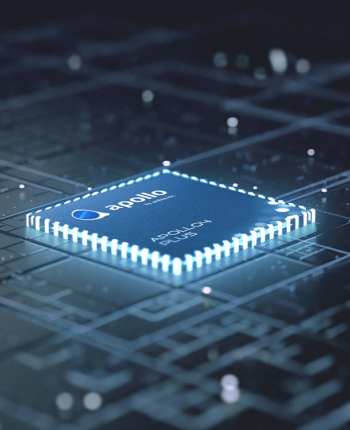Ambiq apollo2 No Further a Mystery
Ambiq apollo2 No Further a Mystery
Blog Article

much more Prompt: A flock of paper airplanes flutters through a dense jungle, weaving all around trees as whenever they ended up migrating birds.
Weakness: With this example, Sora fails to model the chair as being a rigid object, resulting in inaccurate Bodily interactions.
You'll be able to see it as a means to make calculations like whether a small home must be priced at ten thousand pounds, or what sort of climate is awAIting while in the forthcoming weekend.
That's what AI models do! These responsibilities eat hours and several hours of our time, but They can be now automated. They’re in addition to almost everything from information entry to plan buyer concerns.
Ambiq’s HeartKit is actually a reference AI model that demonstrates analyzing 1-guide ECG knowledge to permit many different coronary heart applications, for instance detecting heart arrhythmias and capturing coronary heart charge variability metrics. Furthermore, by examining personal beats, the model can identify irregular beats, for example premature and ectopic beats originating in the atrium or ventricles.
In each scenarios the samples in the generator start out out noisy and chaotic, and as time passes converge to acquire much more plausible impression figures:
She wears sun shades and pink lipstick. She walks confidently and casually. The road is damp and reflective, creating a mirror impact in the colorful lights. A lot of pedestrians wander about.
for our two hundred created pictures; we basically want them to search authentic. One clever strategy all-around this problem will be to follow the Generative Adversarial Network (GAN) method. Listed here we introduce a 2nd discriminator
For technological know-how potential buyers aiming to navigate the transition to an experience-orchestrated business, IDC offers quite a few tips:
This appealing mix of functionality and effectiveness allows our buyers to deploy sophisticated speech, vision, health and fitness, and industrial AI models on battery-powered units all over the place, which makes it the most productive semiconductor on the market to function Along with the Arm Cortex-M55.
Prompt: Aerial watch of Santorini throughout the blue hour, showcasing the stunning architecture of white Cycladic structures with blue domes. The caldera sights are amazing, plus the lights generates a lovely, serene atmosphere.
Apollo510 also improves its memory capacity over the previous technology with four MB of on-chip NVM and three.seventy five MB of on-chip SRAM and TCM, so developers have easy development and even more application flexibility. For extra-large neural network models or graphics belongings, Apollo510 has a number of substantial bandwidth off-chip interfaces, independently capable of peak throughputs up to 500MB/s and sustained throughput around 300MB/s.
Due to this fact, the model is ready to follow the person’s text Guidance while in the created movie extra faithfully.
far more Prompt: A beautiful selfmade video clip demonstrating the folks of Lagos, Nigeria in the 12 months 2056. Shot having a cellphone camera.
Accelerating the Development of Optimized AI Features with Ambiq’s neuralSPOT
Ambiq’s neuralSPOT® is an open-source AI developer-focused SDK designed for our latest Apollo4 Plus system-on-chip (SoC) family. neuralSPOT provides an on-ramp to the rapid development of AI features for our customers’ AI applications and products. Included with neuralSPOT are Ambiq-optimized libraries, tools, and examples to help jumpstart AI-focused applications.
UNDERSTANDING NEURALSPOT VIA THE BASIC TENSORFLOW EXAMPLE
Often, the best way to ramp up on a new software library is through a comprehensive example – this is why neuralSPOt includes basic_tf_stub, an illustrative example that leverages many of neuralSPOT’s Smart watch for diabetics features.
In this article, we walk through the example block-by-block, using it as a guide to building AI features using neuralSPOT.
Ambiq's Vice President of Artificial Intelligence, Carlos Morales, went on CNBC Street Signs Asia to discuss the power consumption of AI and trends in endpoint devices.
Since 2010, Ambiq has been a leader in ultra-low power semiconductors that enable endpoint devices with more data-driven and AI-capable features while dropping the energy requirements up to 10X lower. They do this with the patented Subthreshold Power Optimized Technology (SPOT ®) platform.
Computer inferencing is complex, and for endpoint AI to become practical, these devices have to drop from megawatts of power to microwatts. This is where Ambiq has the power to change industries such as healthcare, agriculture, and Industrial IoT.
Ambiq Designs Low-Power for Next Gen Endpoint Devices
Ambiq’s VP of Architecture and Product Planning, Dan Cermak, joins the ipXchange team at CES to discuss how manufacturers can improve Microcontroller their products with ultra-low power. As technology becomes more sophisticated, energy consumption continues to grow. Here Dan outlines how Ambiq stays ahead of the curve by planning for energy requirements 5 years in advance.
Ambiq’s VP of Architecture and Product Planning at Embedded World 2024
Ambiq specializes in ultra-low-power SoC's designed to make intelligent battery-powered endpoint solutions a reality. These days, just about every endpoint device incorporates AI features, including anomaly detection, speech-driven user interfaces, audio event detection and classification, and health monitoring.
Ambiq's ultra low power, high-performance platforms are ideal for implementing this class of AI features, and we at Ambiq are dedicated to making implementation as easy as possible by offering open-source developer-centric toolkits, software libraries, and reference models to accelerate AI feature development.
NEURALSPOT - BECAUSE AI IS HARD ENOUGH
neuralSPOT is an AI developer-focused SDK in the true sense of the word: it includes everything you need to get your AI model onto Ambiq’s platform. You’ll find libraries for talking to sensors, managing SoC peripherals, and controlling power and memory configurations, along with tools for easily debugging your model from your laptop or PC, and examples that tie it all together.
Facebook | Linkedin | Twitter | YouTube